GIUSEPPE SCALARINI
The famous Italian comic designer, who invented the political satire in Italy
Biography by Manlio Benigni / Italy
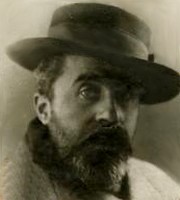 Giuseppe Scalarini was born in Mantua on January 29th 1873, son of Raniero, a railroad employee that had been a volunteer in the second and third Italian Independence wars, and of Virginia Lonardi. In 1888 he earns his technical schooling diploma, expressing an early interest for the arts and drawing. He holds his first exhibition in Mantua in 1890; during this event he meets the coetaneous, future socialist and government leader Ivanoe Bonomi, with whom he founds the Società Letteraria (Literary Society) in 1891. During the same year he finds a job at the local railway direction in Florence, where he attends the Belle Arti institute. In February 1892 he moves to Paris, an environment filled with satirical newspapers –his new interest- for a month and a half. In 1894 he moves to Venice, where he enrols in the third class of the Accademia di Belle Arti. When he returns to Mantua, he founds the Merlin Cocai on November1st 1896, a weekly imprinted on radical and socialist thought. He later moves to Bologna, to work at the Wenk lithography. In 1897 he publishes his first booklet called “Penitenziario”. “Note di viaggio di Geppe Scalarini” (“Penitentiary”. “Travel notes by Geppe Scalarini”) assembled by Amedeo Mezzadri. 1898 is the year of the street rebel movements in order to abolish the duty on grain, that will be repressed by cannons under the order of general Bava Beccaris. On May 1st, Scalarini founds La Terra, Mantua’s first Socialist newspaper, along with Bonomi and Giovanni Zibordi. On July 4th 1898, Scalarini is officially registered at the Mantua Prefecture as a card-carrying member of the socialist party and as “one attending the political class of people affiliated with subversive parties.” Following some of his antimilitaristic and anti-governmental sketches he was sentenced for State offence. He was forced to take refuge in Austria, then in Berlin, where he cooperates with prestigious satirical newspapers, such as Munich’s Fliegende Blatter and Berlin’s Lustige Blatter. On request by the Italian police, he is expelled from Germany on February 17th 1901, and therefore seeks shelter in London, later on in Belgium and in Paris. The amnesty that came after the crowning of Vittorio Emanuele III permitted Scalarini to return to Mantua in 1901. In May he moves to Grisignana, in Istria: here, in 1902, he meets Carolina Pozzi, the inseparable companion that will bear him five daughters. He returns to Mantua in August 1903. He continues drawing on the re-founded Merlin Cocai, of which he is owner and editor in chief. His signature, the drawing of a small ladder followed by the ending syllables “rini,” becomes popular. After the revocation of his expulsion orders from Germany, he returns to Berlin in March 1904, where he will stay until June 1907. Once again in Mantua, he goes back to drawing on Merlin Cocai. Between 1908 and 1911 he works for the Ticino railways, and resumes his collaborations with the Fliegende Blatter and the Lustige Blatter, and also draws for the Pasquino. Scalarini moves to Milan on October 22nd 1911, during the war in Libya, publishing his first sketch on the Avanti!, edited by Claudio Treves. A daily collaboration, that will last until January 10th 1926, year of the infamous censorious Fascist “exceptional laws,” begins, with the production of over 3700 unmistakeable sketches. Rather than being just single political characters, the targets are universal and current events: the war, the voraciousness of capitalism, the exploitation of the working class, the organization and activities of the Fascist paramilitary squads, the cowardly monarchy. His satirical activity let him to various trials between 1911 and 1922. He publishes different anti-war texts with respective drawings: “La guerra nella caricatura” (War in caricature, 1912), “Il processo della guerra” (The war process, 1913), “La guerra davanti al tribunale della storia” (The war in front of history’s court, 1929) and “Abbasso la guerra” (Down with war, 1923.) In 1920 he is assaulted in Gavirate (in the Varese province), where he has been living since 1914, by a group of Fascist paramilitary squads that administer him castor oil. He therefore moves to Savona and then to Travedona (Varese). The year 1921 is the one of his greatest artistic production, when he contemporaneously cooperates with ten different newspapers. From December 1921 to September 1925 he also cooperates to the new series of the Asino. The attack on Mussolini in Bologna on October 31st 1926 triggers Fascist reprisals against left-party newspapers and militants. The State’s special defence Court institutes exceptional laws against the regime opponents. In November, Scalarini is beat in Milan by a group of Blackshirts. This attack causes the fracture of his mandible and a brain concussion. When he comes out of the hospital on December 1st 1926 he is arrested and transferred in front of the special Court, that condemns him to five years of confinement, first in Lampedusa, then in Ustica, where he stays until November 1926, when he is moved back to Milan, remaining “specially supervised”. Scalarini will deal with the experience of confinement in a later on published diary called “Le mie isole” (My islands). He is prevented by signing “any of his work of any type”, a ban that will never be revoked. Hence, Scalarini begins writing children literature, publishing “Le avventure di Miglio” (Miglio’s adventures) in 1933, that has the signature of his daughter Virginia Chiabov. He also cooperates with the Corriere dei Piccoli (a newspaper for children) from 1932 to 1946 and with the Domenica del Corriere from 1934 to 1946. On July 15th 1940 he is arrested once again in Gavirate, on the 20th he is interned in the Istonio (nowadays Vasto, in the province of Chieti) concentration camp. He is later transferred to Bucchianico (Chieti). On December 22nd the internment is revoked but the monitoring is renewed. In 1943 he escapes an arrest by the Salò police. After the War he re-starts his collaboration with the Avanti!, and also works for l’Umanità, the Codino Rosso and the Sempre Avanti!. He loses his beloved Carolina, which he marries close to her death in 1943, and his daughter Giuseppina in 1945. Giuseppe Scalarini dies in Milan on December 30th 1948. 13.000 drawings, of which 5800 originals, are left of his immense satirical production, that has also been admired in many later exhibitions.
Giuseppe Scalarini was born in Mantua on January 29th 1873, son of Raniero, a railroad employee that had been a volunteer in the second and third Italian Independence wars, and of Virginia Lonardi. In 1888 he earns his technical schooling diploma, expressing an early interest for the arts and drawing. He holds his first exhibition in Mantua in 1890; during this event he meets the coetaneous, future socialist and government leader Ivanoe Bonomi, with whom he founds the Società Letteraria (Literary Society) in 1891. During the same year he finds a job at the local railway direction in Florence, where he attends the Belle Arti institute. In February 1892 he moves to Paris, an environment filled with satirical newspapers –his new interest- for a month and a half. In 1894 he moves to Venice, where he enrols in the third class of the Accademia di Belle Arti. When he returns to Mantua, he founds the Merlin Cocai on November1st 1896, a weekly imprinted on radical and socialist thought. He later moves to Bologna, to work at the Wenk lithography. In 1897 he publishes his first booklet called “Penitenziario”. “Note di viaggio di Geppe Scalarini” (“Penitentiary”. “Travel notes by Geppe Scalarini”) assembled by Amedeo Mezzadri. 1898 is the year of the street rebel movements in order to abolish the duty on grain, that will be repressed by cannons under the order of general Bava Beccaris. On May 1st, Scalarini founds La Terra, Mantua’s first Socialist newspaper, along with Bonomi and Giovanni Zibordi. On July 4th 1898, Scalarini is officially registered at the Mantua Prefecture as a card-carrying member of the socialist party and as “one attending the political class of people affiliated with subversive parties.” Following some of his antimilitaristic and anti-governmental sketches he was sentenced for State offence. He was forced to take refuge in Austria, then in Berlin, where he cooperates with prestigious satirical newspapers, such as Munich’s Fliegende Blatter and Berlin’s Lustige Blatter. On request by the Italian police, he is expelled from Germany on February 17th 1901, and therefore seeks shelter in London, later on in Belgium and in Paris. The amnesty that came after the crowning of Vittorio Emanuele III permitted Scalarini to return to Mantua in 1901. In May he moves to Grisignana, in Istria: here, in 1902, he meets Carolina Pozzi, the inseparable companion that will bear him five daughters. He returns to Mantua in August 1903. He continues drawing on the re-founded Merlin Cocai, of which he is owner and editor in chief. His signature, the drawing of a small ladder followed by the ending syllables “rini,” becomes popular. After the revocation of his expulsion orders from Germany, he returns to Berlin in March 1904, where he will stay until June 1907. Once again in Mantua, he goes back to drawing on Merlin Cocai. Between 1908 and 1911 he works for the Ticino railways, and resumes his collaborations with the Fliegende Blatter and the Lustige Blatter, and also draws for the Pasquino. Scalarini moves to Milan on October 22nd 1911, during the war in Libya, publishing his first sketch on the Avanti!, edited by Claudio Treves. A daily collaboration, that will last until January 10th 1926, year of the infamous censorious Fascist “exceptional laws,” begins, with the production of over 3700 unmistakeable sketches. Rather than being just single political characters, the targets are universal and current events: the war, the voraciousness of capitalism, the exploitation of the working class, the organization and activities of the Fascist paramilitary squads, the cowardly monarchy. His satirical activity let him to various trials between 1911 and 1922. He publishes different anti-war texts with respective drawings: “La guerra nella caricatura” (War in caricature, 1912), “Il processo della guerra” (The war process, 1913), “La guerra davanti al tribunale della storia” (The war in front of history’s court, 1929) and “Abbasso la guerra” (Down with war, 1923.) In 1920 he is assaulted in Gavirate (in the Varese province), where he has been living since 1914, by a group of Fascist paramilitary squads that administer him castor oil. He therefore moves to Savona and then to Travedona (Varese). The year 1921 is the one of his greatest artistic production, when he contemporaneously cooperates with ten different newspapers. From December 1921 to September 1925 he also cooperates to the new series of the Asino. The attack on Mussolini in Bologna on October 31st 1926 triggers Fascist reprisals against left-party newspapers and militants. The State’s special defence Court institutes exceptional laws against the regime opponents. In November, Scalarini is beat in Milan by a group of Blackshirts. This attack causes the fracture of his mandible and a brain concussion. When he comes out of the hospital on December 1st 1926 he is arrested and transferred in front of the special Court, that condemns him to five years of confinement, first in Lampedusa, then in Ustica, where he stays until November 1926, when he is moved back to Milan, remaining “specially supervised”. Scalarini will deal with the experience of confinement in a later on published diary called “Le mie isole” (My islands). He is prevented by signing “any of his work of any type”, a ban that will never be revoked. Hence, Scalarini begins writing children literature, publishing “Le avventure di Miglio” (Miglio’s adventures) in 1933, that has the signature of his daughter Virginia Chiabov. He also cooperates with the Corriere dei Piccoli (a newspaper for children) from 1932 to 1946 and with the Domenica del Corriere from 1934 to 1946. On July 15th 1940 he is arrested once again in Gavirate, on the 20th he is interned in the Istonio (nowadays Vasto, in the province of Chieti) concentration camp. He is later transferred to Bucchianico (Chieti). On December 22nd the internment is revoked but the monitoring is renewed. In 1943 he escapes an arrest by the Salò police. After the War he re-starts his collaboration with the Avanti!, and also works for l’Umanità, the Codino Rosso and the Sempre Avanti!. He loses his beloved Carolina, which he marries close to her death in 1943, and his daughter Giuseppina in 1945. Giuseppe Scalarini dies in Milan on December 30th 1948. 13.000 drawings, of which 5800 originals, are left of his immense satirical production, that has also been admired in many later exhibitions.
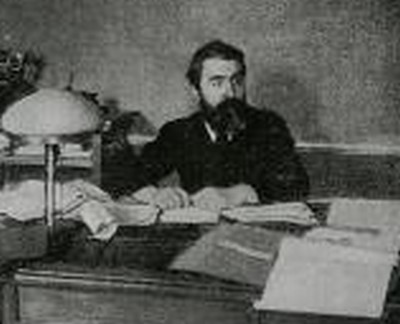 Giuseppe Scalarini
Giuseppe Scalarini
*****
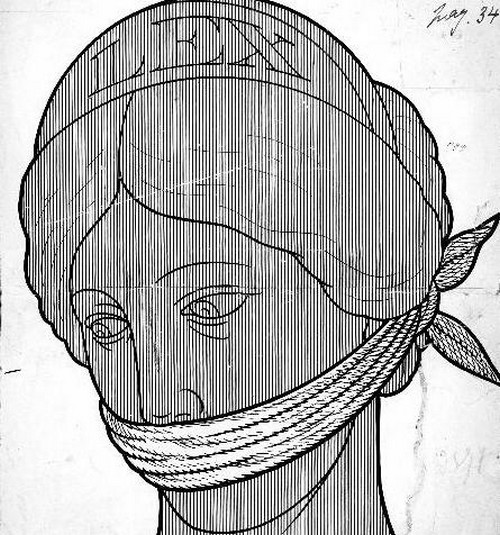
GIUSEPPE SCALARINI (1873 – 1948) AN.INTRANSIGENT STYLE
POLITICAL GRAPHIC ART, SATIRE, ILLUSTRATION
*****
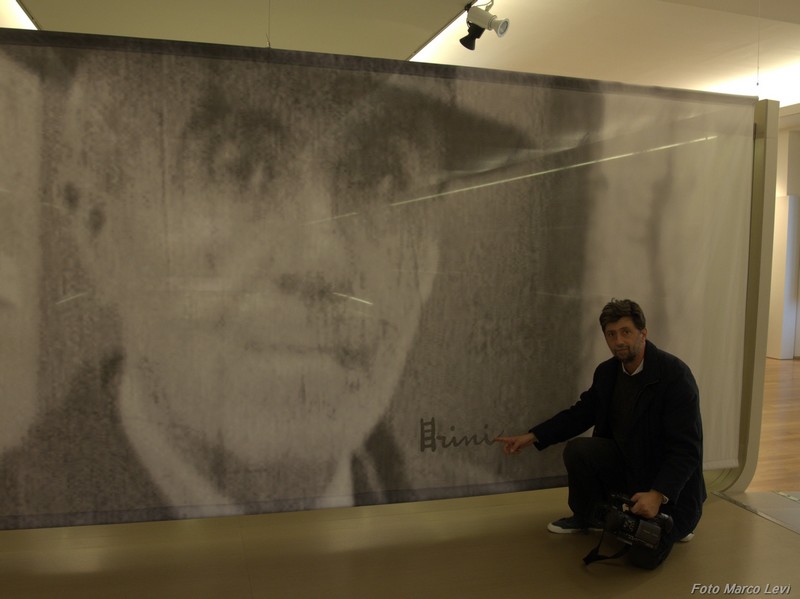 Exhibition of Giuseppe Scalarini in Museo del Novecento-MIlan, Italy, 2014
Exhibition of Giuseppe Scalarini in Museo del Novecento-MIlan, Italy, 2014
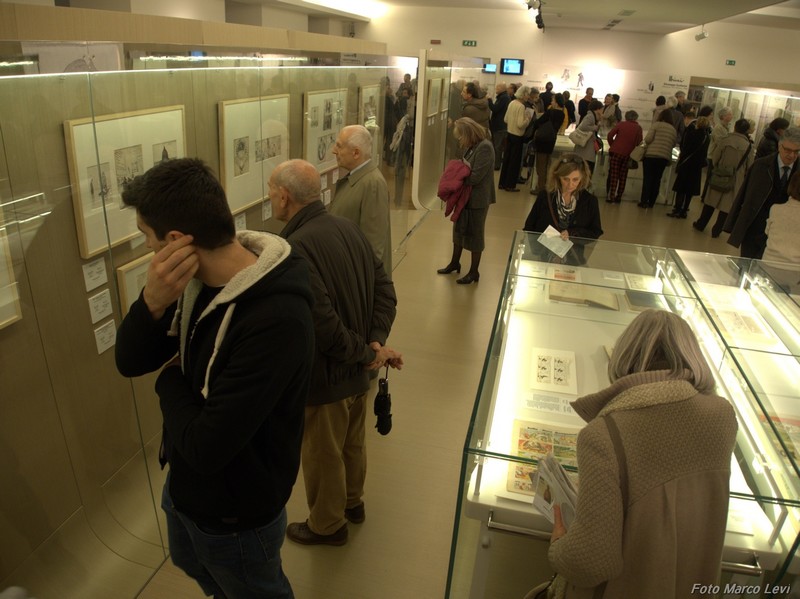 Exhibition of Giuseppe Scalarini in Museo del Novecento-Milan, Italy, 2014
Exhibition of Giuseppe Scalarini in Museo del Novecento-Milan, Italy, 2014
*****
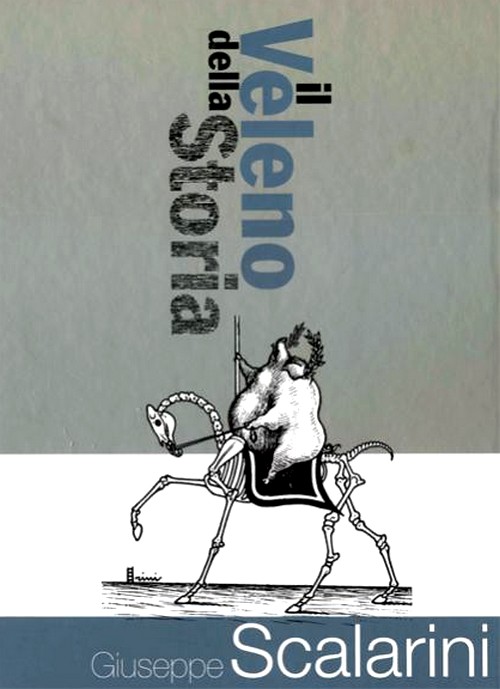
*****
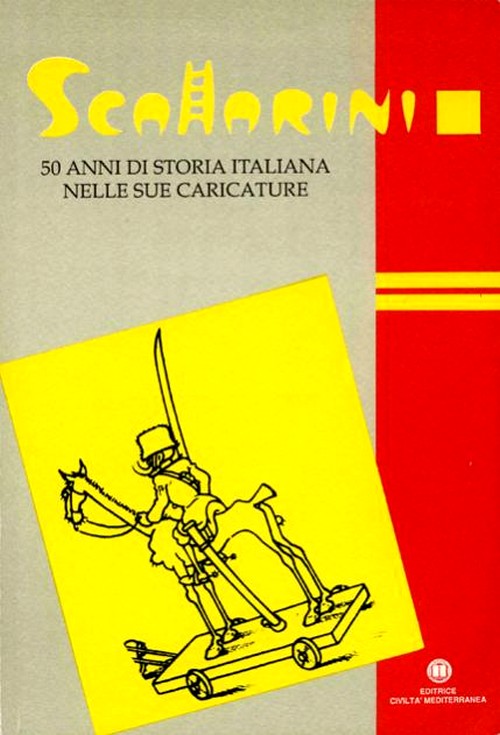
*****
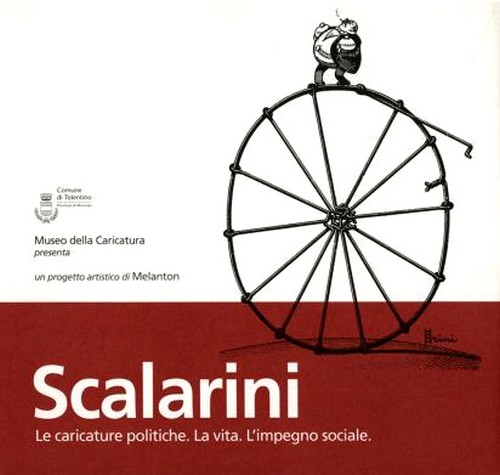 *****
*****
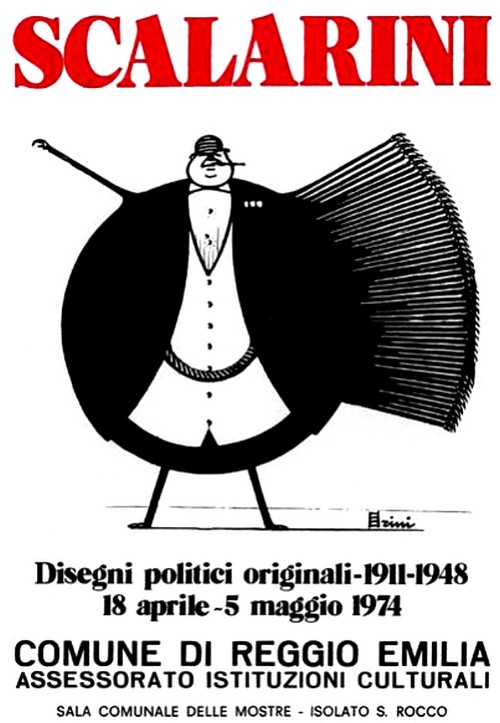
*****
More information about the artist you can find here: http://www.scalarini.it
*****
* Source: Vito Maggio / Italy
